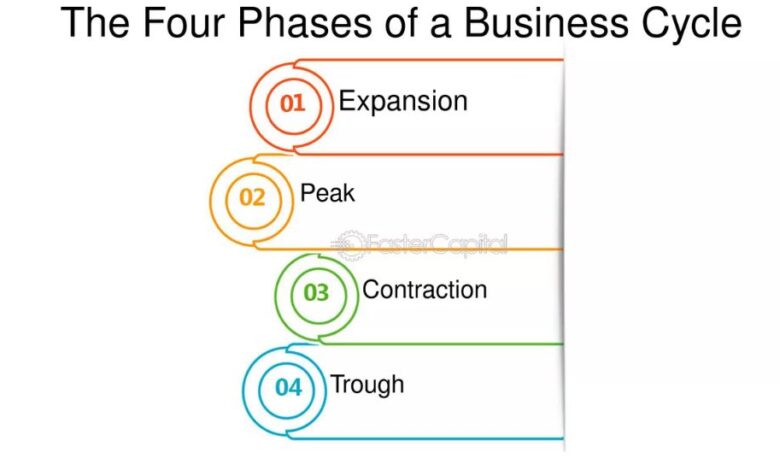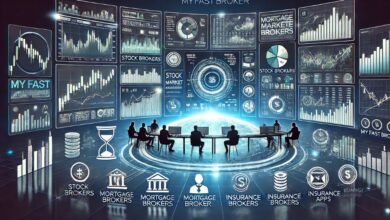The Dynamics: 13. List the Four Distinct Phases of the Business Cycle
Understanding 13. List the Four Distinct Phases of the Business Cycle.

The economy operates like a pendulum, moving through periods of growth and contraction in what is commonly referred to as the business cycle. “13. List the Four Distinct Phases of the Business Cycle.” is not just an academic query but an essential concept for businesses, policymakers, and individuals to grasp. These phases—Expansion, Peak, Contraction, and Trough—shape the economic landscape, influencing everything from investment decisions to employment levels. This comprehensive article delves deep into these four phases, explaining their characteristics, significance, and impact on the broader economy.
What is the Business Cycle?
The business cycle is a recurring sequence of economic activity characterized by fluctuations in GDP, employment, and production. While these fluctuations may vary in duration and intensity, the cycle consistently follows a predictable pattern. Understanding “13. List the Four Distinct Phases of the Business Cycle.” provides insight into how economies grow, stabilize, and recover from downturns.
Expansion: The Phase of Growth
The expansion phase marks the beginning of the business cycle and is characterized by increasing economic activity. During this period:
- Rising GDP: Economic output and production levels increase, reflecting growing demand for goods and services.
- Improved Employment: Businesses hire more workers to meet rising demand, leading to lower unemployment rates.
- Higher Consumer Confidence: Consumers feel optimistic about their financial future, which drives increased spending.
- Investment Growth: Companies expand their operations, investing in new technologies and infrastructure.
This phase fosters a sense of optimism, with policymakers often working to sustain the momentum without overheating the economy.
Peak: The High Point of Economic Activity
The peak represents the zenith of the business cycle. It’s the point where economic activity reaches its maximum potential before slowing down. Characteristics of the peak phase include:
- Full Capacity Utilization: Businesses operate at or near full capacity, utilizing resources to their maximum efficiency.
- High Employment Levels: Unemployment is at its lowest, and labor markets may experience shortages in skilled workers.
- Inflationary Pressures: Excessive demand may push prices upward, leading to inflation.
While the peak signals a robust economy, it often comes with challenges such as inflated asset prices and rising costs, which may precede the next phase.
Contraction: The Decline Begins
Following the peak, the economy enters the contraction phase. This period is marked by a slowdown in economic activity and can range from a mild deceleration to a severe recession. Key characteristics include:
- Decreasing Output: GDP growth slows or becomes negative as businesses scale back production.
- Rising Unemployment: Job cuts occur as companies seek to reduce costs.
- Declining Consumer Confidence: Consumers become cautious, reducing spending and saving more.
- Reduced Investment: Businesses delay or cancel expansion plans due to uncertainty.
Contractions are often triggered by external shocks, policy changes, or imbalances that develop during the expansion phase. Policymakers typically intervene through fiscal and monetary measures to mitigate the downturn.
Trough: The Economy Hits Bottom
The trough is the lowest point of the business cycle, marking the end of a contraction and the beginning of recovery. During this phase:
- Economic Activity Stabilizes: GDP stops declining and may show early signs of growth.
- High Unemployment: Joblessness remains elevated, but layoffs slow as businesses stabilize.
- Low Inflation: Demand and prices reach their lowest points.
- Opportunities for Recovery: Asset prices may be undervalued, creating opportunities for investors.
The trough often serves as a turning point, paving the way for renewed expansion. Strategic decisions made during this phase can significantly impact future growth.
The Interplay of the Four Phases
Understanding “13. list the four distinct phases of the business cycle.” involves recognizing the interconnected nature of these phases. Each phase sets the stage for the next, creating a continuous loop of economic activity. Policymakers and economists monitor indicators such as GDP, inflation, and employment to predict and manage these transitions.
Conclusion
“13. list the four distinct phases of the business cycle.” encapsulates the dynamic nature of economic activity. From the optimism of expansion to the challenges of contraction, each phase plays a crucial role in shaping economic outcomes. By understanding these phases, businesses can strategize effectively, individuals can make informed financial decisions, and governments can implement policies to foster stability and growth. The business cycle’s rhythm may vary, but its lessons remain timeless.



